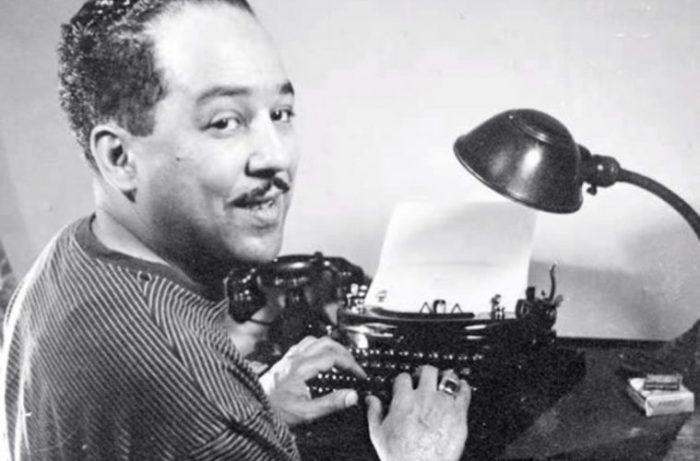Harlem by langston hughes worksheet answers – Embark on an enlightening journey through Langston Hughes’s iconic poem, “Harlem,” with our comprehensive worksheet answers. Dive into the historical context, literary devices, and profound themes that shape this timeless masterpiece, shedding light on the complexities of the Harlem Renaissance and beyond.
Our in-depth analysis unveils the poem’s intricate structure, symbolism, and social commentary, providing a deeper understanding of its enduring relevance and impact.
Overview of “Harlem” by Langston Hughes

Langston Hughes’ “Harlem” is a seminal poem that captures the aspirations and disillusionment of African Americans during the Harlem Renaissance. Written in 1951, the poem’s historical context is crucial to understanding its significance. The Harlem Renaissance was a period of cultural and artistic flourishing among African Americans in the 1920s and 1930s, marked by a surge in literature, music, and art.
However, despite the progress made during this time, racial inequality and discrimination remained pervasive.
The poem’s structure is simple yet effective. It consists of 12 lines, divided into four stanzas. The imagery is vivid and evocative, painting a picture of Harlem’s vibrant streets and the dreams and frustrations of its inhabitants. The central theme of the poem is the “dream deferred,” a metaphor for the hopes and aspirations of African Americans that are repeatedly delayed or crushed by societal barriers.
Literary Devices and Techniques: Harlem By Langston Hughes Worksheet Answers

Hughes employs various literary devices to enhance the poem’s impact. Metaphors, such as the “dream deferred,” create a powerful image of unfulfilled potential. Similes, like “like a raisin in the sun,” evoke the sweetness and bitterness of African American life.
Personification, as in “Harlem shadows fall,” brings the city itself to life, embodying the weight of oppression.
These devices contribute to the poem’s meaning by emphasizing the emotional and psychological impact of racial inequality. The “dream deferred” becomes a tangible symbol of the frustration and despair felt by African Americans. The use of similes and personification makes the poem more relatable and emotionally resonant, inviting readers to connect with the experiences of the Harlem community.
Symbolism and Imagery
The “dream deferred” is the central symbol in the poem, representing the hopes and aspirations of African Americans that are repeatedly postponed or destroyed. Other key images include the “raggedy man” and the “dark river.” The “raggedy man” symbolizes the marginalized and impoverished, while the “dark river” represents the obstacles and challenges faced by African Americans.
These symbols reflect the experiences and aspirations of African Americans during the Harlem Renaissance. The “dream deferred” captures the sense of frustration and disillusionment that many felt despite the progress made during this period. The “raggedy man” and the “dark river” symbolize the poverty and discrimination that continued to plague the African American community.
Themes and Social Commentary

The poem explores several central themes, including racial inequality, hope, and disillusionment. Hughes uses the poem to critique societal issues and advocate for social change. The “dream deferred” highlights the ongoing struggle for racial equality and the impact of discrimination on the African American community.
Despite the poem’s bleak imagery, there is also a sense of hope and resilience. The speaker’s determination to “let it come” suggests a refusal to give up on their dreams. The poem ends with a question, “What happens to a dream deferred?,” leaving readers to contemplate the consequences of unfulfilled aspirations and the need for social change.
Historical and Cultural Context
The poem was written in 1951, during a period of significant social and political change for African Americans. The Harlem Renaissance had ended, and the country was facing the challenges of the post-war era. The Civil Rights Movement was gaining momentum, but racial inequality and discrimination remained pervasive.
The poem reflects the social and political climate of the time. The “dream deferred” captures the hopes and frustrations of African Americans who had made progress during the Harlem Renaissance but still faced significant obstacles. The poem also serves as a reminder of the ongoing struggle for racial equality and the need for continued social change.
Impact and Legacy
Langston Hughes’ “Harlem” has had a profound impact on American literature and society. The poem has been widely anthologized and studied, and it continues to resonate with readers today. It has been used as a rallying cry for social justice and as a source of inspiration for generations of African Americans.
The poem’s legacy is its ability to capture the hopes and frustrations of African Americans and to provoke thought and discussion about racial inequality. It is a powerful reminder of the challenges faced by marginalized communities and the need for ongoing social change.
“Harlem” remains an important work of literature that continues to inspire and challenge readers today.
Commonly Asked Questions
What is the central theme of “Harlem”?
The poem explores the deferred dreams and disillusionment of African Americans, highlighting racial inequality and the longing for hope and change.
How does Hughes use literary devices in the poem?
Hughes employs metaphors, similes, and personification to create vivid imagery and convey the emotional weight of the poem’s themes.
What is the significance of the “dream deferred” symbol?
The “dream deferred” represents the unfulfilled aspirations and potential of African Americans, evoking a sense of frustration and urgency.
